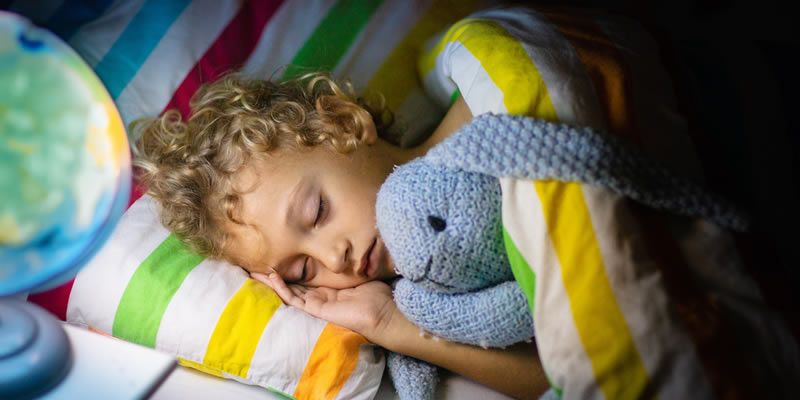Children who have difficulty sleeping are more likely to develop an insomnia disorder in early adulthood compared to children who have no insomnia symptoms, according to a new study.
Insomnia symptoms are suggested to continue from childhood into adulthood, latest findings have reported.
The research, from Penn State College of Medicine, is the first long-term cohort study to explain the developmental trajectories of childhood insomnia symptoms from adolescence to adulthood.
- Vaccinating children is not beneficial, researchers state
- Artificial pancreas credited with transforming lives of children with diabetes
Julio Fernandez-Mendoza, associate professor of psychiatry and behavioural health, explained: “Young adulthood is a stage in life where there is a documented increase in the severity and prevalence of physical and mental health problems, such as cardiovascular disease and suicide rates.
“Sleep disorders — especially sleep apnea and insomnia — are linked with poorer cardiovascular and mental health. Given that up to 25 per cent of children, 35 per cent of adolescents and 45 per cent of young adults suffer from insomnia symptoms, we were interested in learning how these symptoms evolve over time as the child grows into adulthood.”
Starting in 2000, the study was devised as a random, population-based study of children from 5- to 12- years old. The children and their guardians informed the researchers of the children’s insomnia symptoms, defined specifically as moderate-to-severe difficulties initiating and/or maintaining sleep.
The children also took part in another study, an objective in-laboratory sleep study using polysomnography to detect sleep apnea and other indicators including amount and quality of sleep. 502 of the children were examined 7.4 years later (with an average age of 16-years-old) and 15 years later (with an average age of 24-years-old).
Results determined that 43 per cent of the children with insomnia symptoms continued to experience symptoms as adults. 27 per cent of children with symptoms underwent remission of symptoms by adolescence, and around 19 per cent experienced a waxing and waning pattern of symptoms into adulthood.
Only 15 per cent of the children with no symptoms developed insomnia from childhood to adolescence and suffered with symptoms as an adult. 21 per cent of participants developed symptoms as an adult and around 16 per cent of the children with no symptoms then experienced a waxing-and-waning symptom pattern.
Fernandez-Mendoza said: “We know that not everyone who complains of insomnia symptoms has the same degree of sleep disturbance when sleep is measured objectively in the laboratory, so it was important that our study included these objective in-lab measurements in addition to the self-reports.
“Indeed, the study found that insomnia symptoms in adolescents who slept short in the lab were 5.5 times more likely to worsen into adult insomnia, while those who reported the same insomnia symptoms and slept normally in the lab were not at increased risk of worsening into adult insomnia.”
He added: “The key finding of this study is that insomnia symptoms in childhood are much more likely to persist over time than we previously believed.
“Those with insomnia symptoms and laboratory-measured short sleep duration are much more likely to evolve to develop a clinical condition in early adulthood, and not just to persist with the symptoms. So, parents and clinicians should not assume that insomnia symptoms are benign complaints that will go away with age. That’s not what our study shows for a significant proportion of youth.”
On the other hand, Fernandez-Mendoza also said that many adults who have insomnia may have had issues sleeping during their childhood.
“Although adults’ sleep issues tend to be triggered by their most recent life stressors, for some people, their insomnia may track back to sleep problems starting in childhood,” he explained.
The study did not analyse the underlying causes for children’s sleep issues, yet Fernandez-Mendoza said that the main causes are commonly ‘behavioural’ (such as when a child does not want to sleep or needs a parent with them to sleep), psychiatric and behavioural disorders (such as attention deficit hyperactivity disorder, autism, or mood disorders), and medical conditions (such as headaches or gastrointestinal problems). He also highlighted that gender, race, and socioeconomic factors need to be taken into consideration.
Fernandez-Mendoza clarified: “We know there are health disparities in insomnia symptoms. For example, our prior studies showed that females after puberty; racial and ethnic minorities, specifically Black/African American; and children from low socioeconomic households are more likely to have insomnia symptoms that persist in the transition to adolescence.”
- New study examines differences in children diagnosed with type 1 diabetes
- More children at risk of developing myopia since pandemic, study reports
The results suggest that childhood insomnia symptoms need early intervention, including behavioural therapy for behavioural insomnia and appropriate treatments for medical or psychiatric conditions.
Findings showed that adolescence is a critical period to tackle chronic sleep issues. According to the results, the first-line intervention cognitive behavioural therapy for insomnia (CBTI) is proving to be greatly successful amongst adolescents.
The researchers also gathered data on health outcomes and are currently finalising the publication of this data.
Fernandez-Mendoza said: “We know that poor sleep is related to adverse health outcomes. We suspect that many children who experience insomnia symptoms that persist into adulthood will also suffer from some negative health consequences.”
The study was published in the journal Pediatrics.




